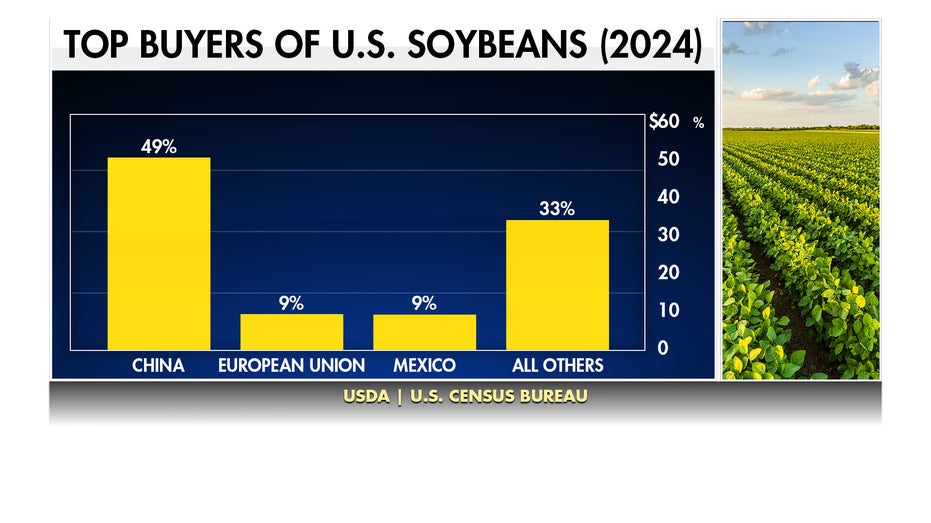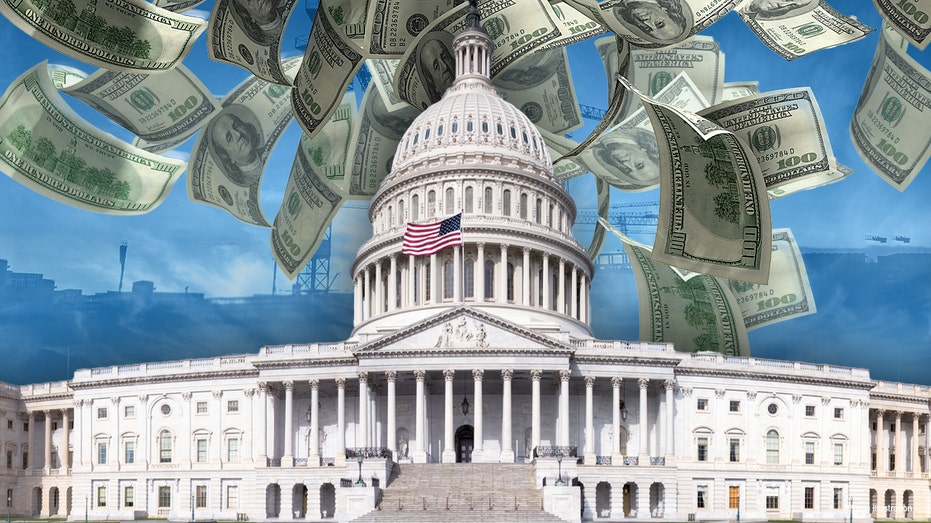Farmers in southern Illinois say drought, high costs, and China’s trade freeze are driving soybean profits below break even this season.
Soybean farmers across the Midwest are bracing for another difficult year as trade tensions with China cut off their largest export market and rising costs drive profits below break-even.
Fourth-generation Illinois farmer Chris Otten said drought and lower prices have turned a routine harvest into a financial strain.
“We can’t harvest a crop that puts us in the black at all,” he said. “Everything we’re doing is going to put us in the red.”
He said the family is leaning more on alfalfa and wheat to offset losses, though switching adds costs. “Anytime you change something, your soil tests and fertilizer rates change and your costs go way up.”
AMERICAN FARMER DEMANDS RIGHT TO REPAIR OWN EQUIPMENT AMID SOARING COSTS: ‘MONEY IS TIGHT’
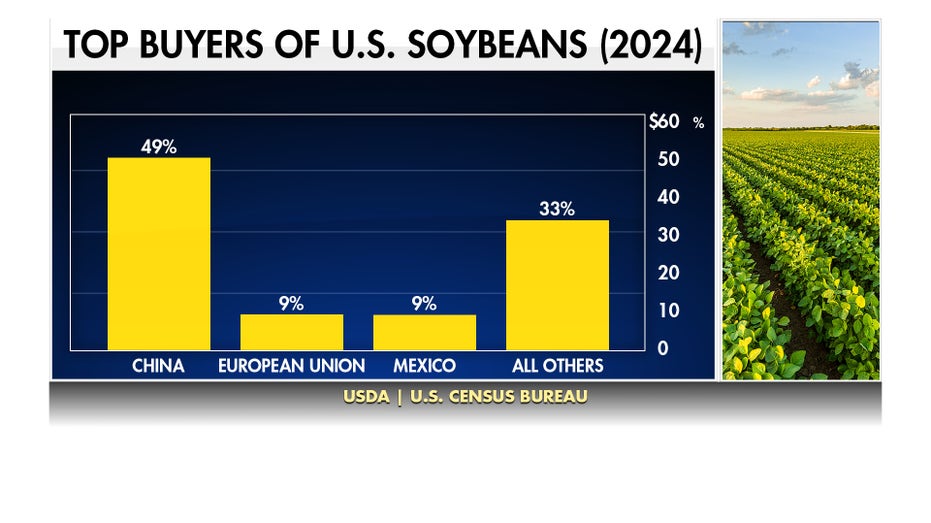
China purchased nearly half of all U.S. soybean exports in 2024, according to data from the U.S. Department of Agriculture and U.S. Census Bureau. (Fox News / USDA / U.S. Census Bureau / Fox News)
China is typically the dominant foreign buyer of U.S. soybeans, purchasing about half of American soybean exports in 2024 – roughly $12.6 billion out of $25.8 billion in total U.S. exports – according to the U.S. Census Bureau and Department of Agriculture.
Other top buyers included the European Union at about $2.45 billion, Mexico at $2.3 billion, Indonesia at $1.24 billion, Germany at $1.05 billion and Egypt at $1.01 billion.
AMERICAN SOYBEAN FARMERS FACE FINANCIAL CRISIS AS CHINA TRADE DISPUTE THREATENS LIVELIHOODS
According to the White House, China has not purchased a single bushel from American farmers, a sharp reversal that producers say is rippling across the Midwest.
Otten said the impact reaches beyond the commodity price itself.
“Trade wars work both ways,” he said. “It’s not just about buying soybeans; it’s also our cost of fertilizer and chemicals. Most of that comes from outside the country, and it costs us a lot more money.”
With production expenses climbing nearly 50 percent over the last several years, he said even average yields cannot cover the cost of seed, fertilizer and fuel.
CHIPOTLE AND SWEETGREEN BET BIG ON SMALL FARMERS AMID AGRICULTURE CRISIS
During remarks in the Oval Office on Sept. 25, President Donald Trump said the administration plans to use tariff revenue to support farmers affected by trade tensions, telling reporters, “We’re going to take some of that tariff money that we made, we’re going to give it to our farmers, who are, for a little while, going to be hurt until the tariffs kick into their benefit.”
The White House has not said when or how much assistance could be provided, but officials have acknowledged discussions about potential aid.
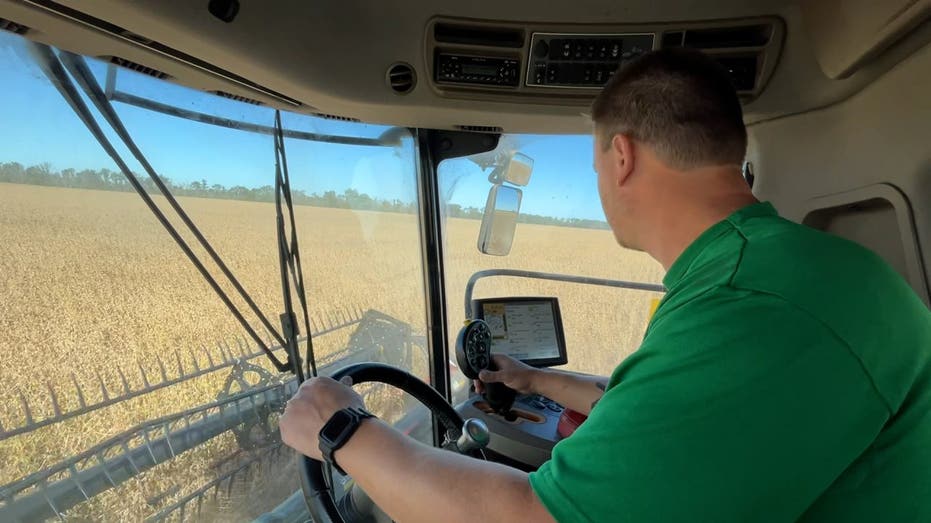
Adam Otten steers the family’s combine through a field of soybeans in St. Libory, Illinois, part of a fourth-generation farm operation. (Olivianna Calmes / Fox News)
Brazil has overtaken the United States as the world’s top soybean exporter, according to data from the U.S. Department of Agriculture. The agency shows Brazilian shipments now outpacing U.S. exports after years of steady growth in South American production and infrastructure.
In the U.S., demand for soybeans has picked up as more processing plants open to turn beans into oil and animal feed. That extra use has helped, but not enough to make up for the drop in exports. USDA data show crushing capacity has grown every year since 2021, though farmers still depend heavily on foreign buyers to keep prices stable.
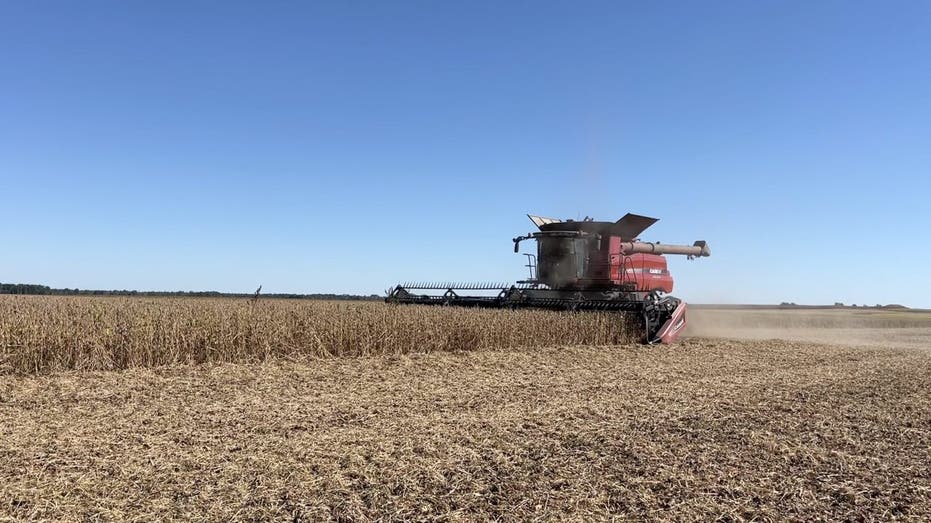
A combine moves across a soybean field in southern Illinois as dry weather and trade tensions weigh on profits for Midwest farmers. (Olivianna Calmes / Fox News)
TRUMP ADMINISTRATION MOVES DECISIVELY TO BLOCK CHINA FROM ‘WEAPONIZING’ AMERICAN FARMLAND
According to the U.S. Department of Agriculture, cash receipts from soybeans, a key measure of farm income, are forecast to fall about 7 percent this year, a drop of roughly $3.4 billion as growers face lower prices and smaller harvests.

Farmers across Illinois are storing more soybeans this season, waiting for prices to recover as exports remain low. (Olivianna Calmes / Fox News)
Farmers say they are tightening budgets, deferring equipment purchases and storing more grain in hopes of better prices later. Otten said he is doing the same but remains optimistic that the market will turn around.
GET FOX BUSINESS ON THE GO BY CLICKING HERE
“We’re just banking on it going up,” he said. “We can’t afford to sell at a loss. But we’ve had ups and downs before. It’ll come back around, it always does.”
